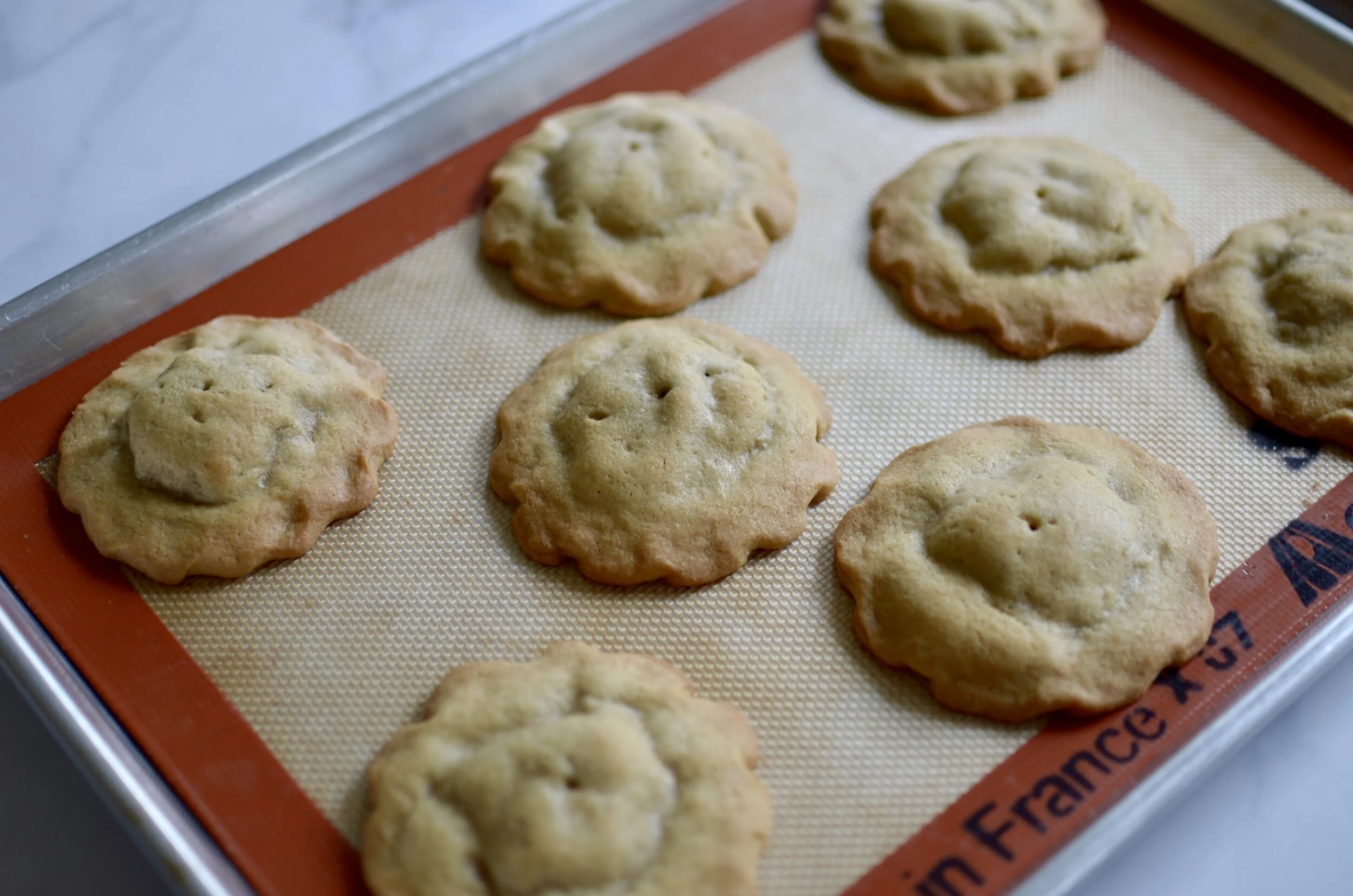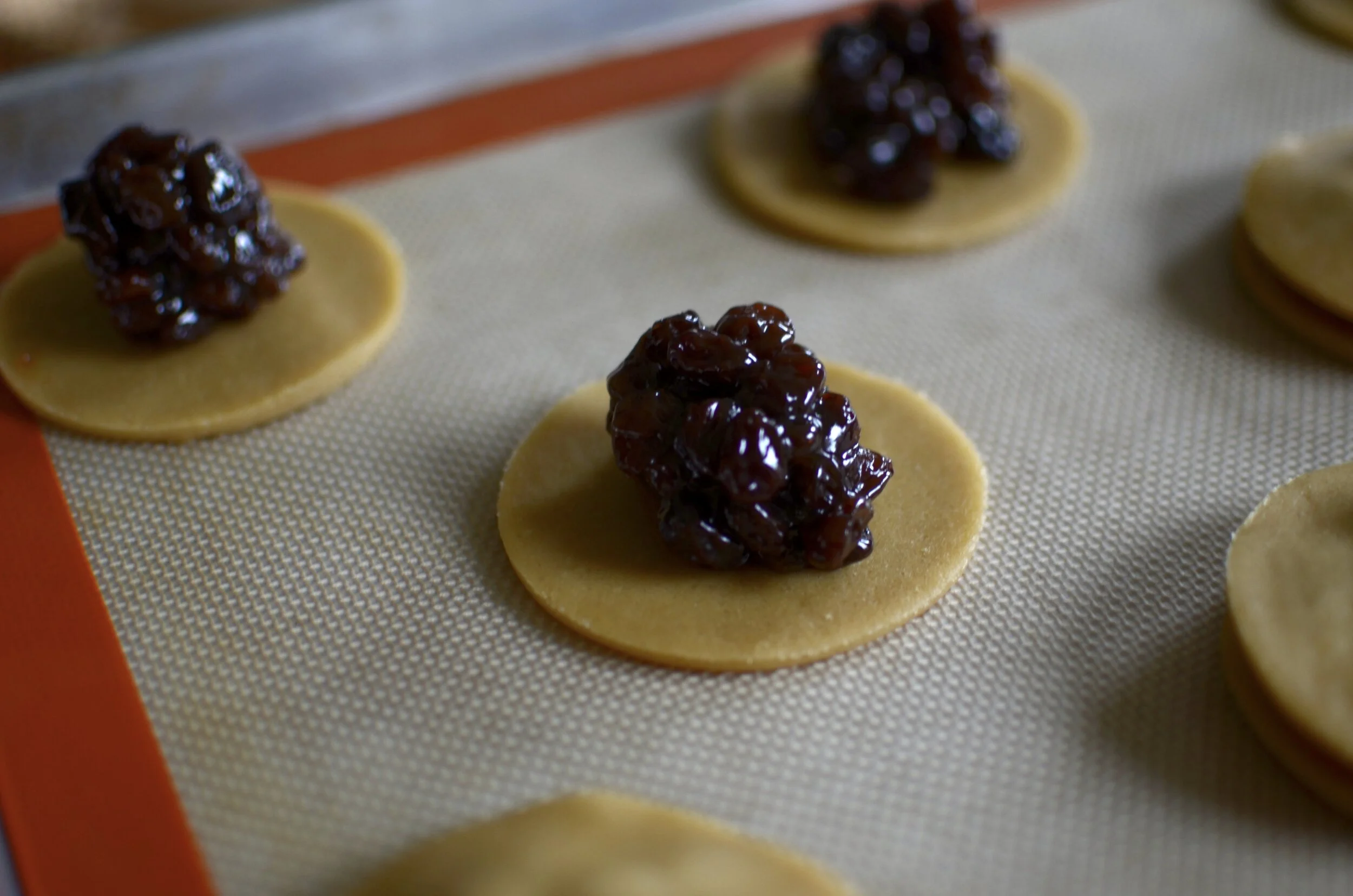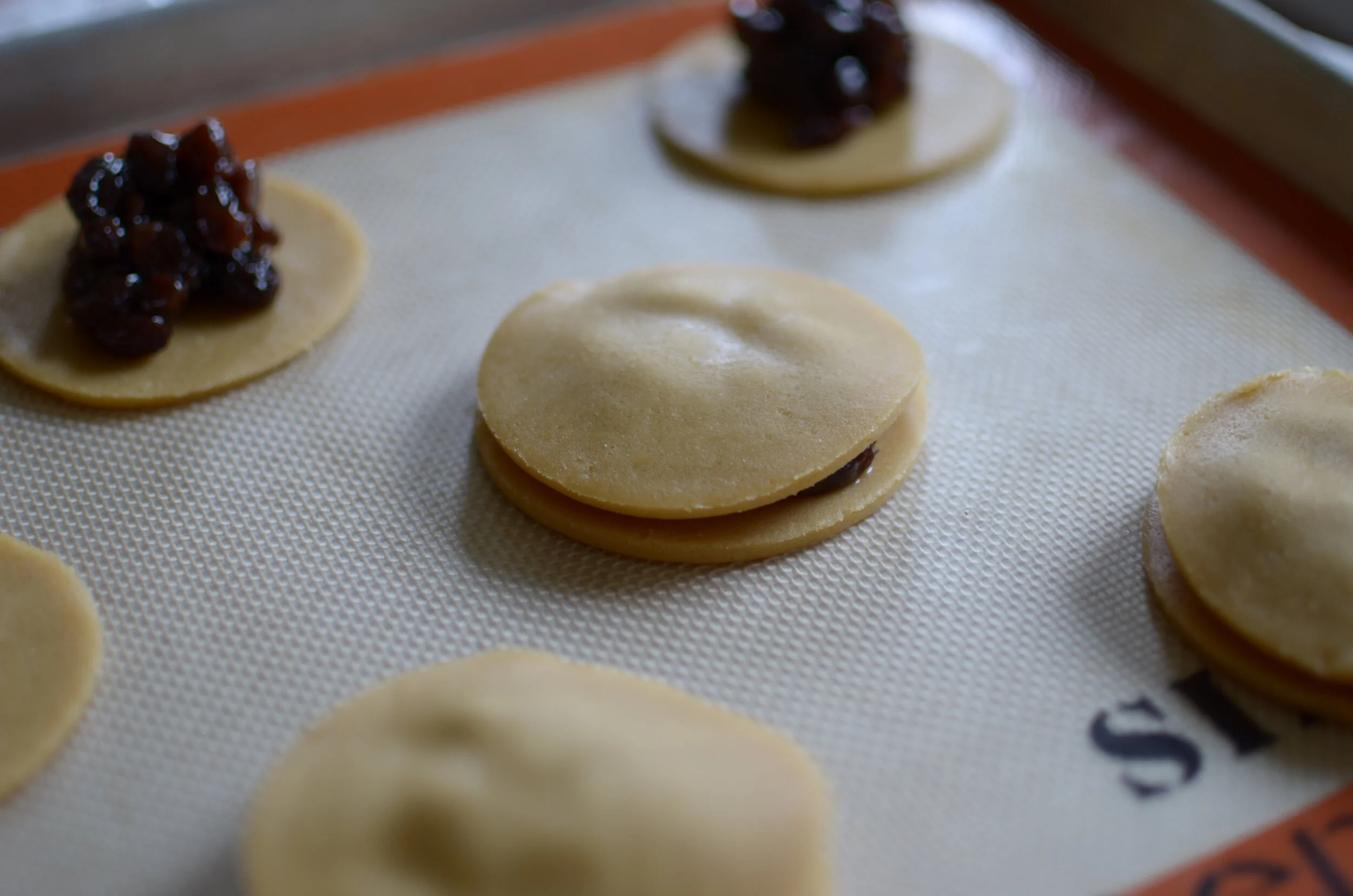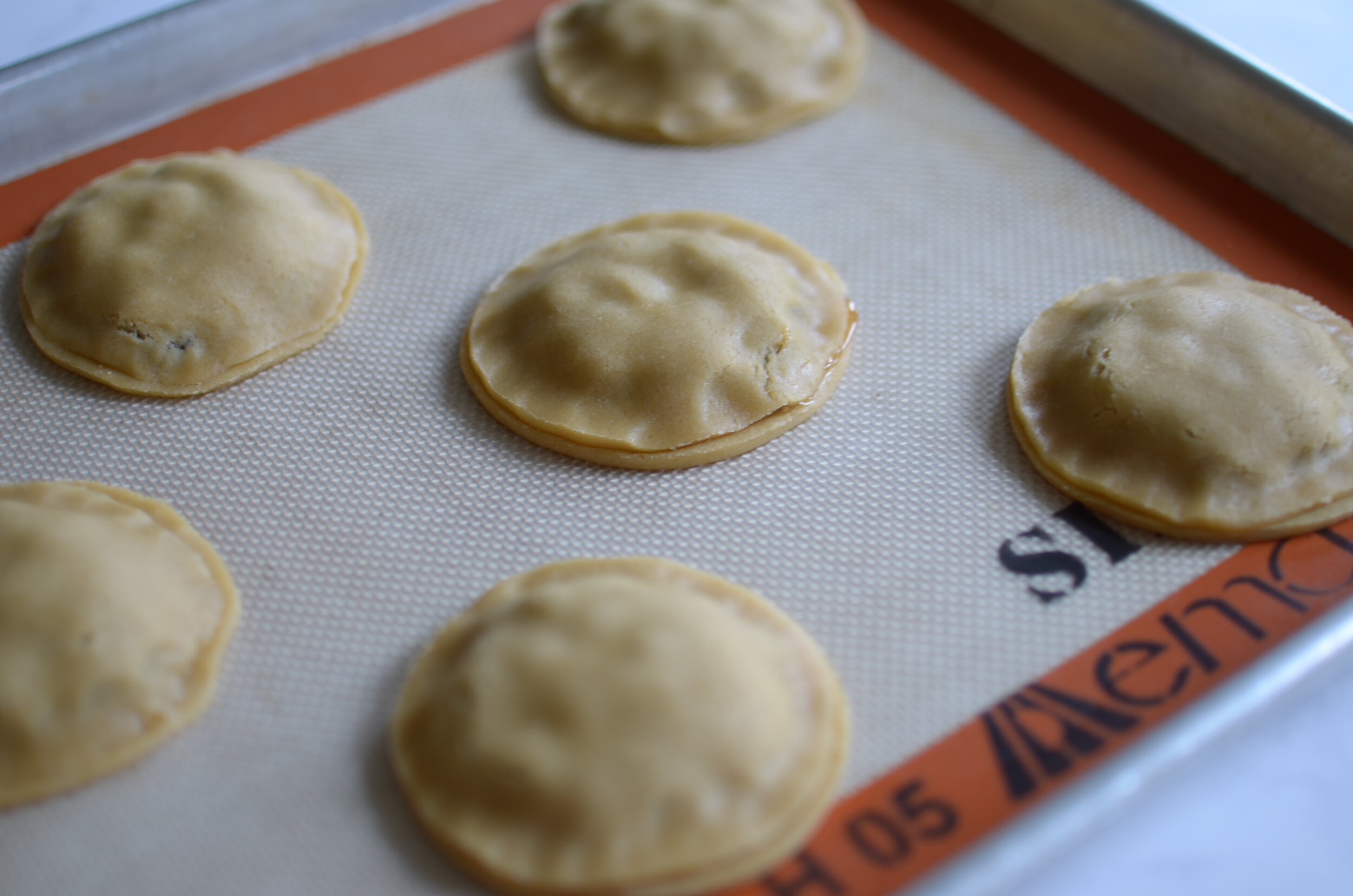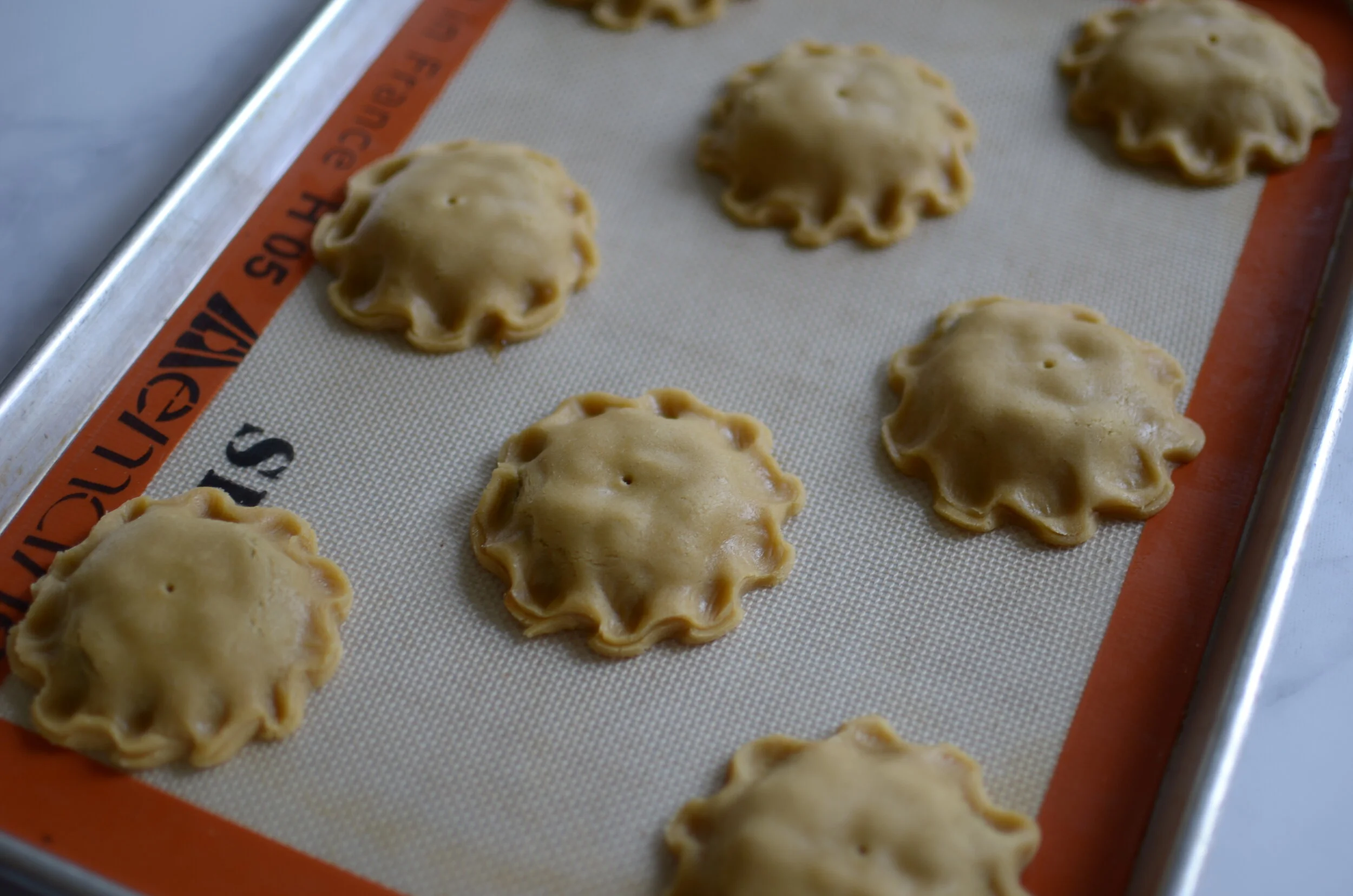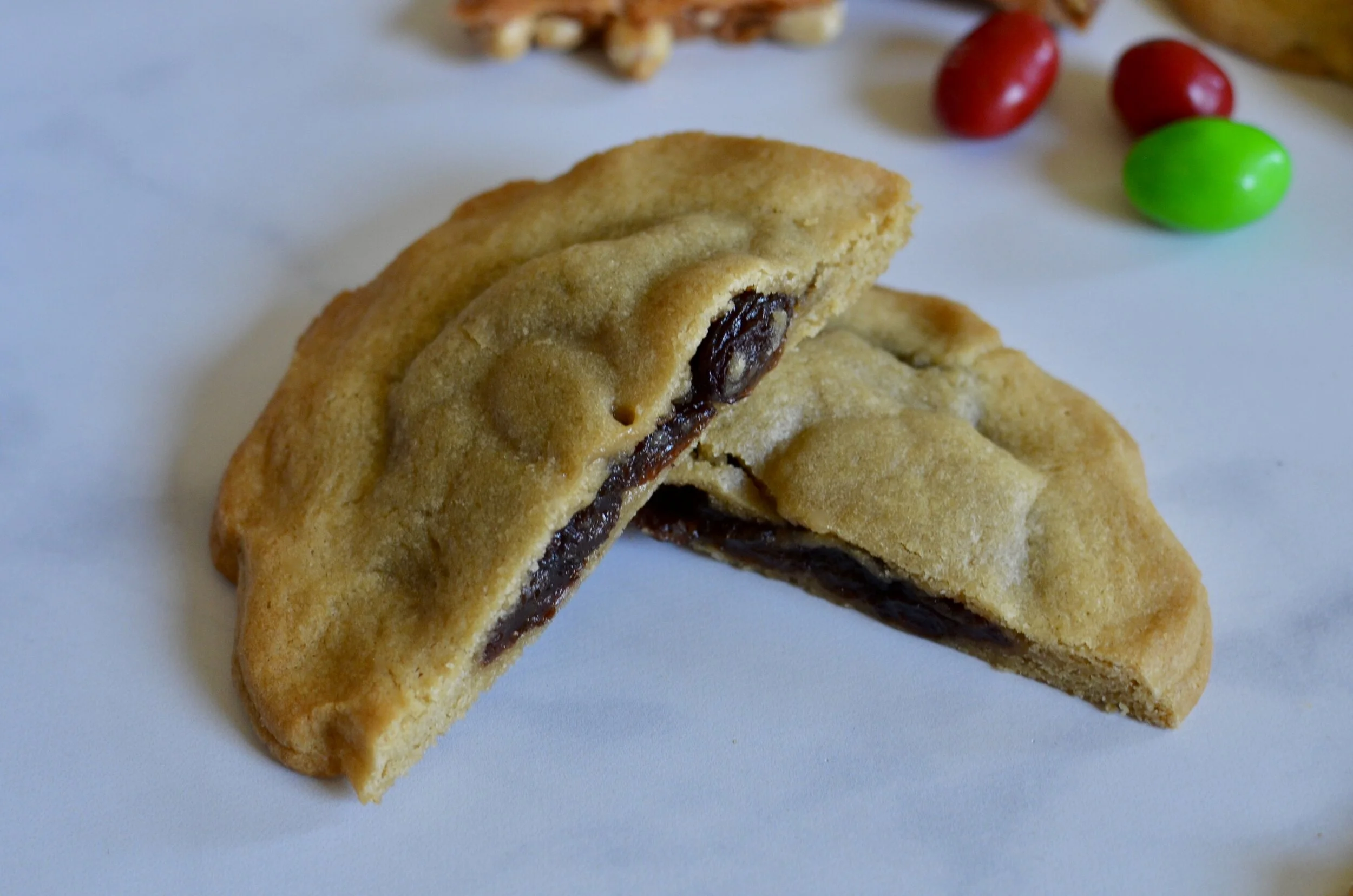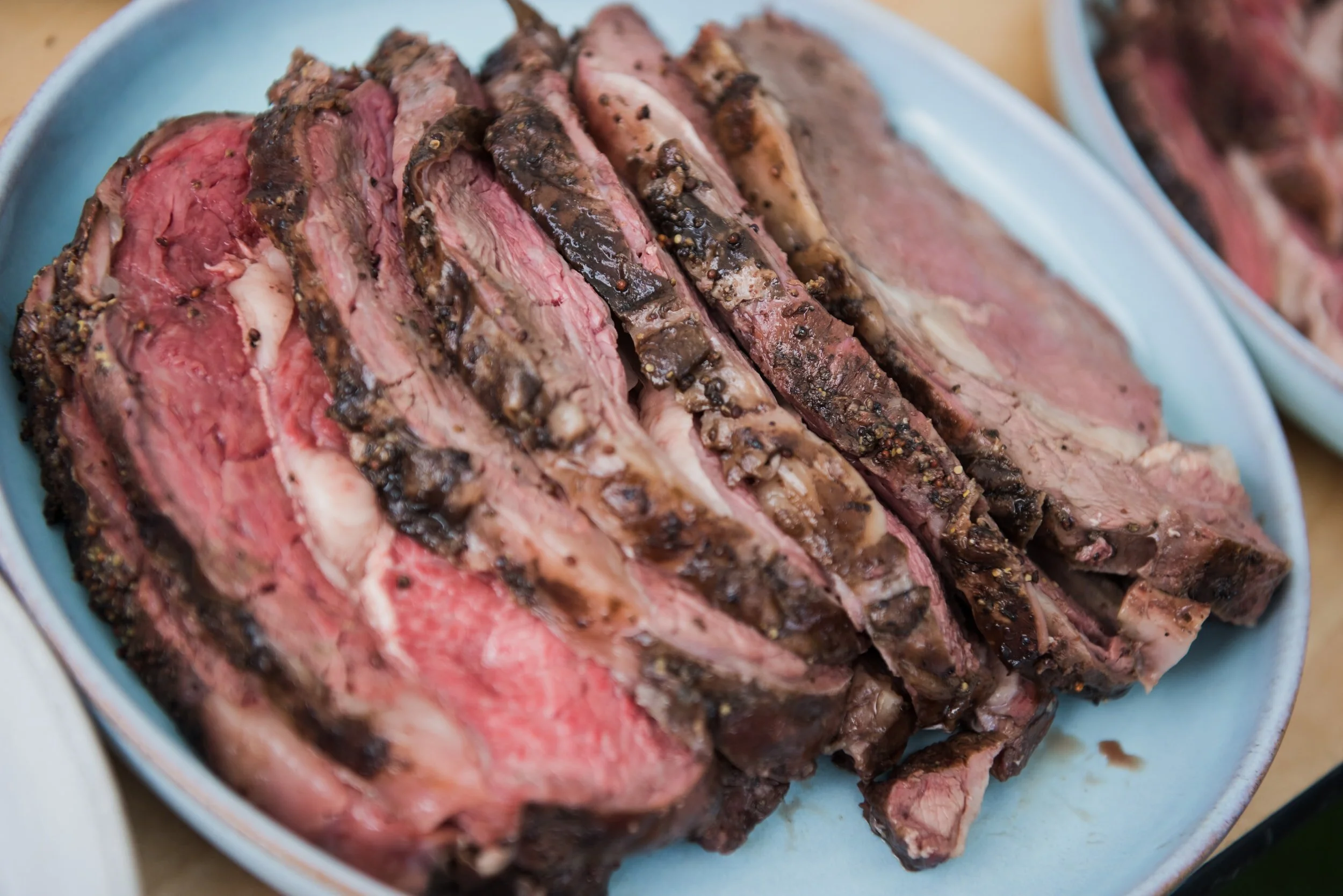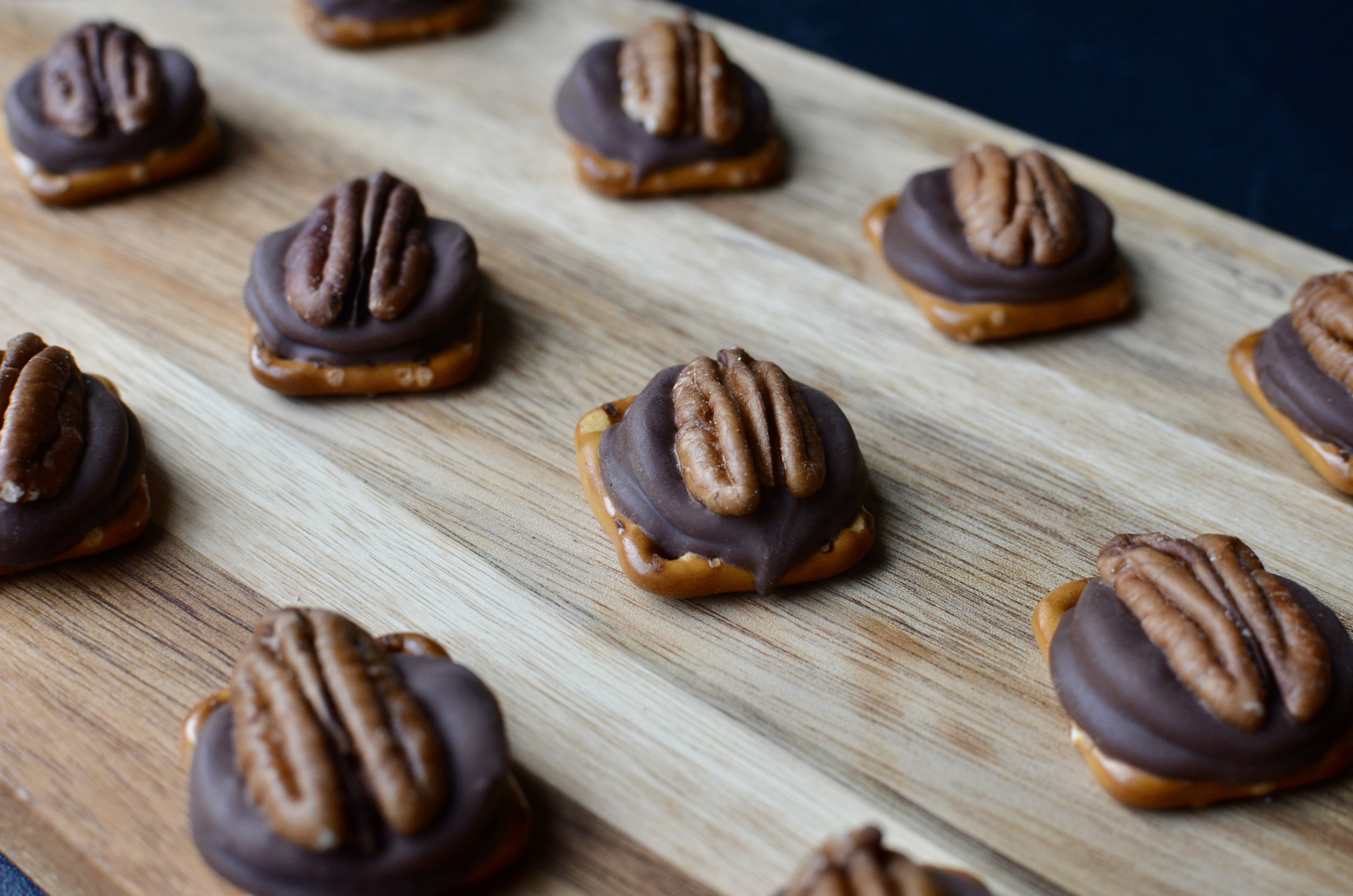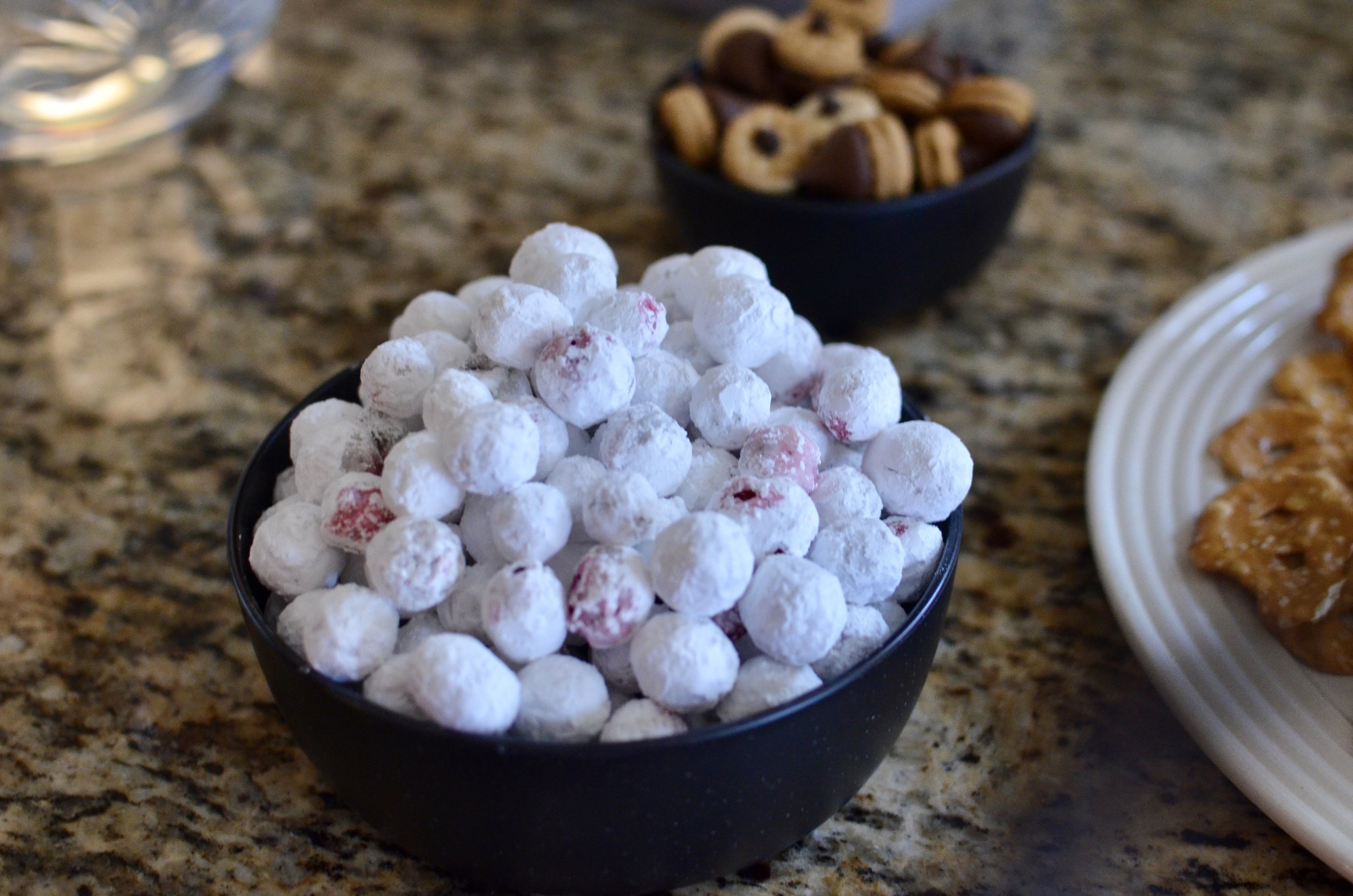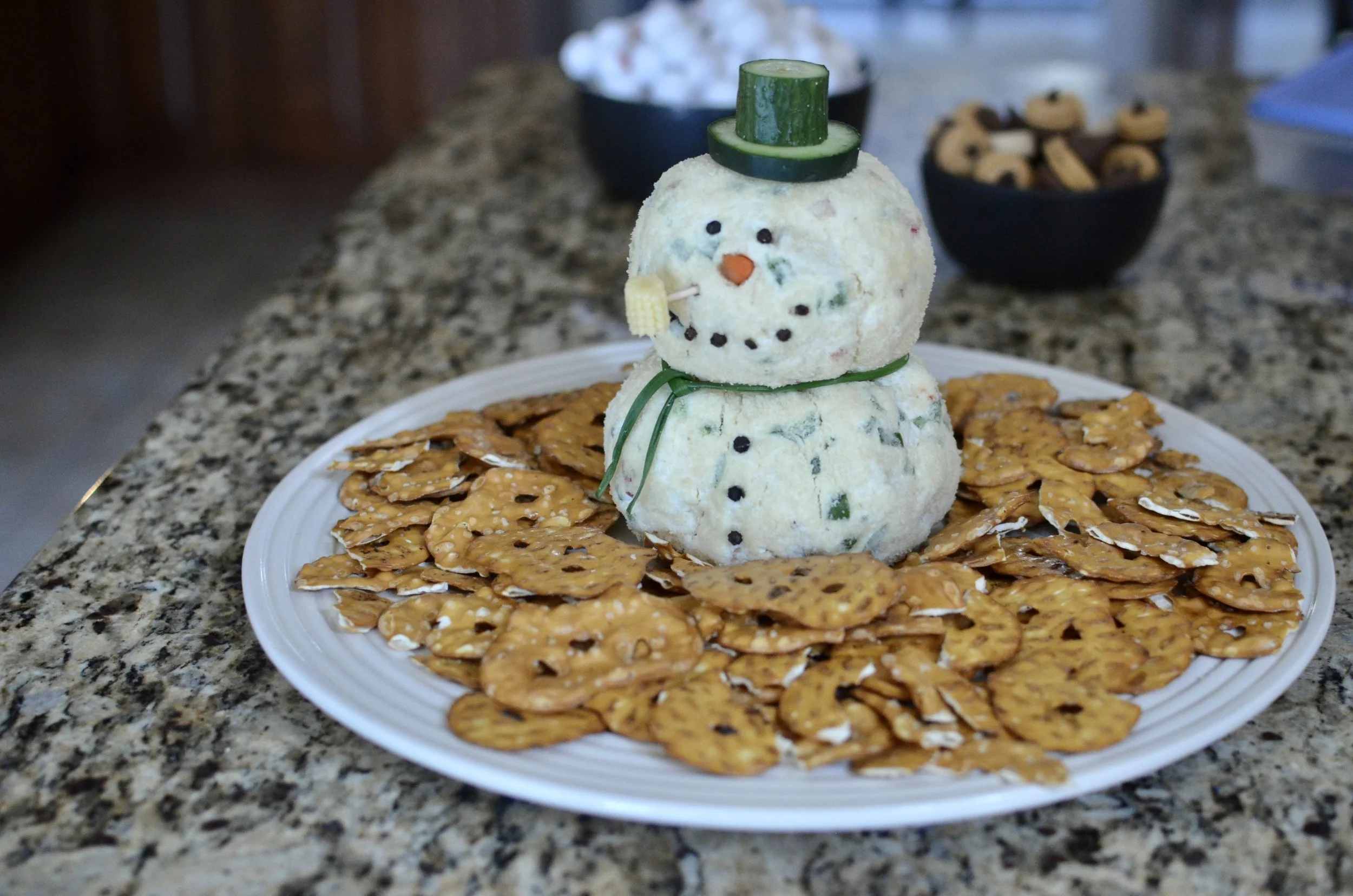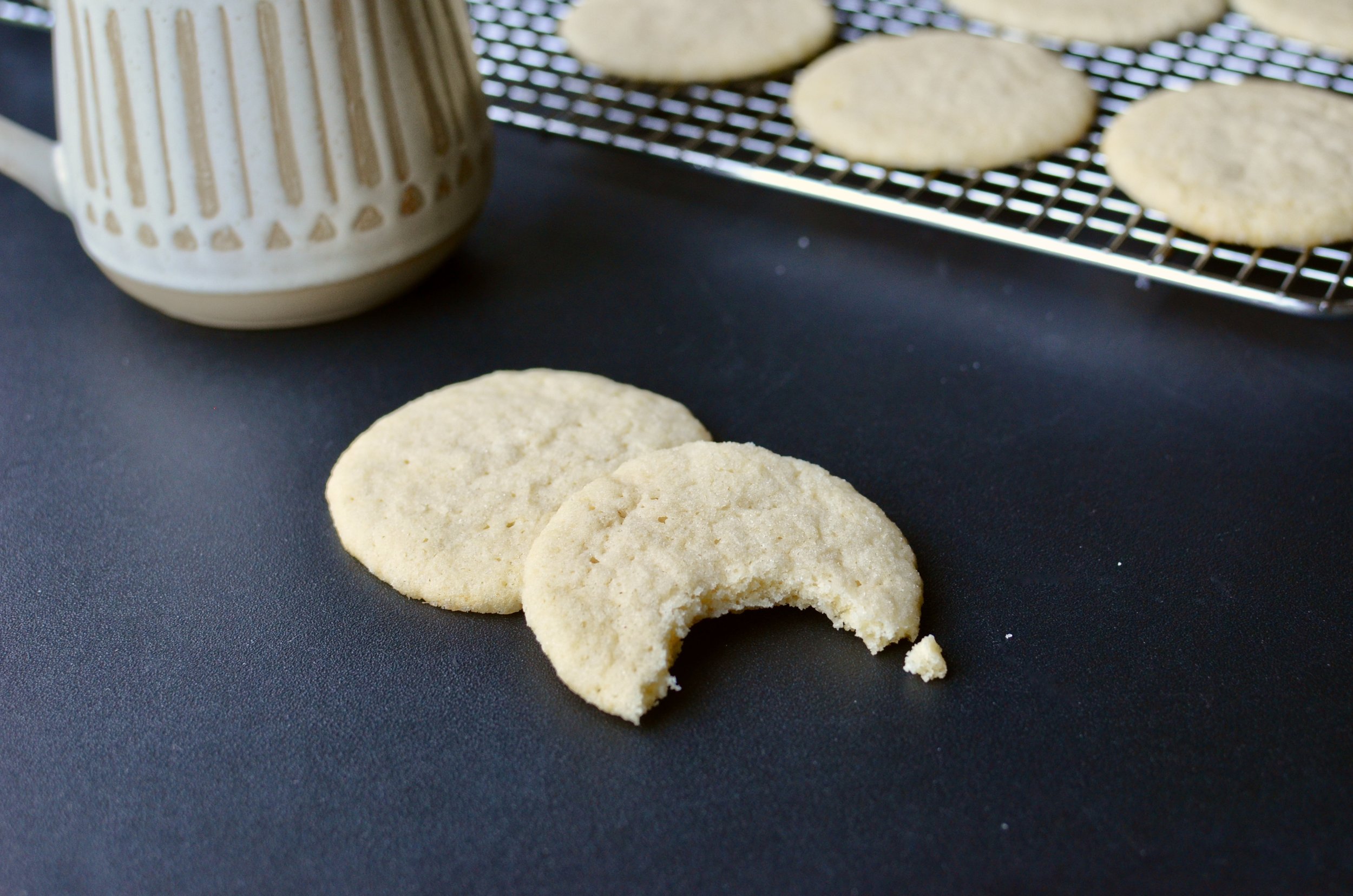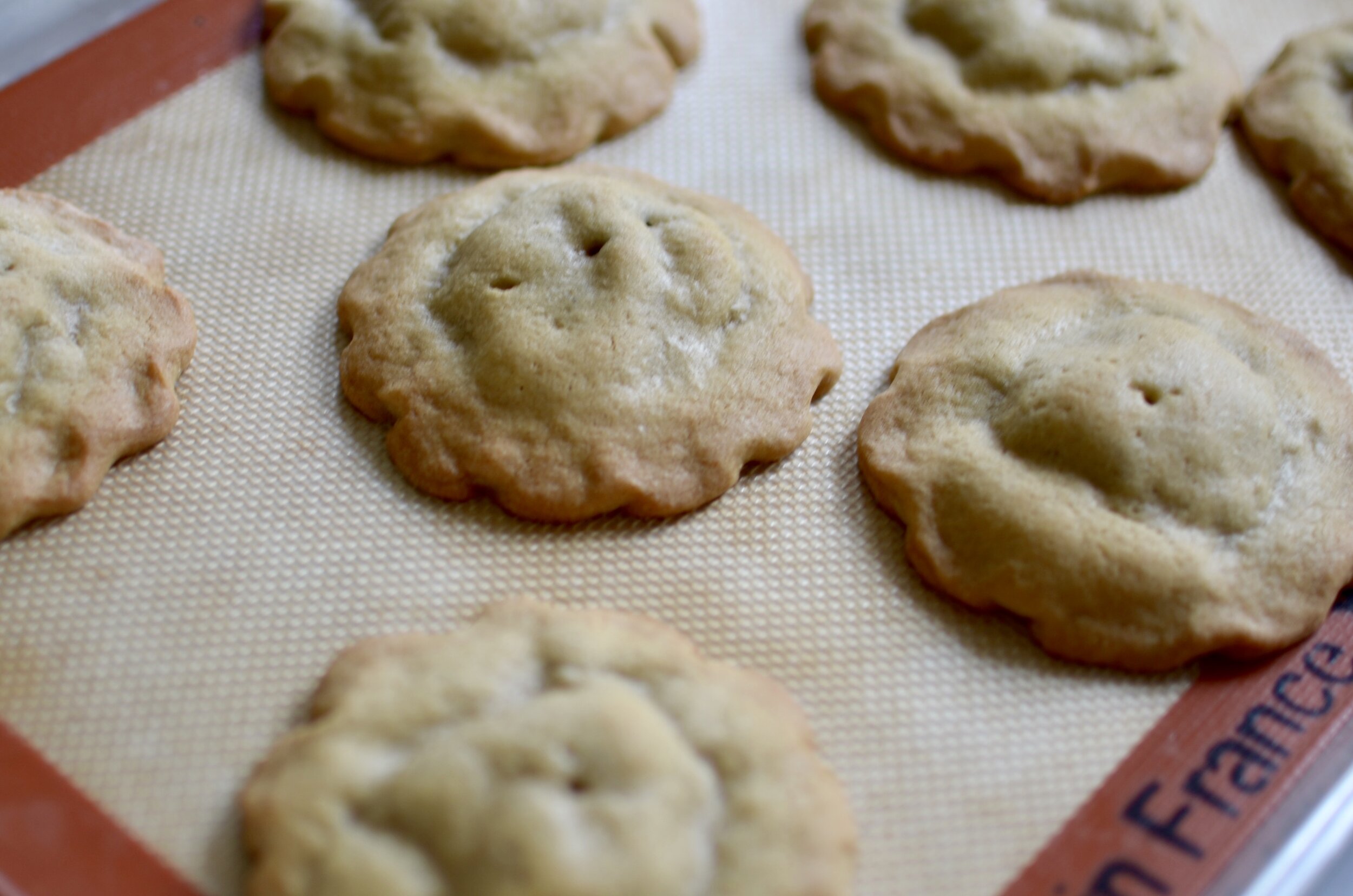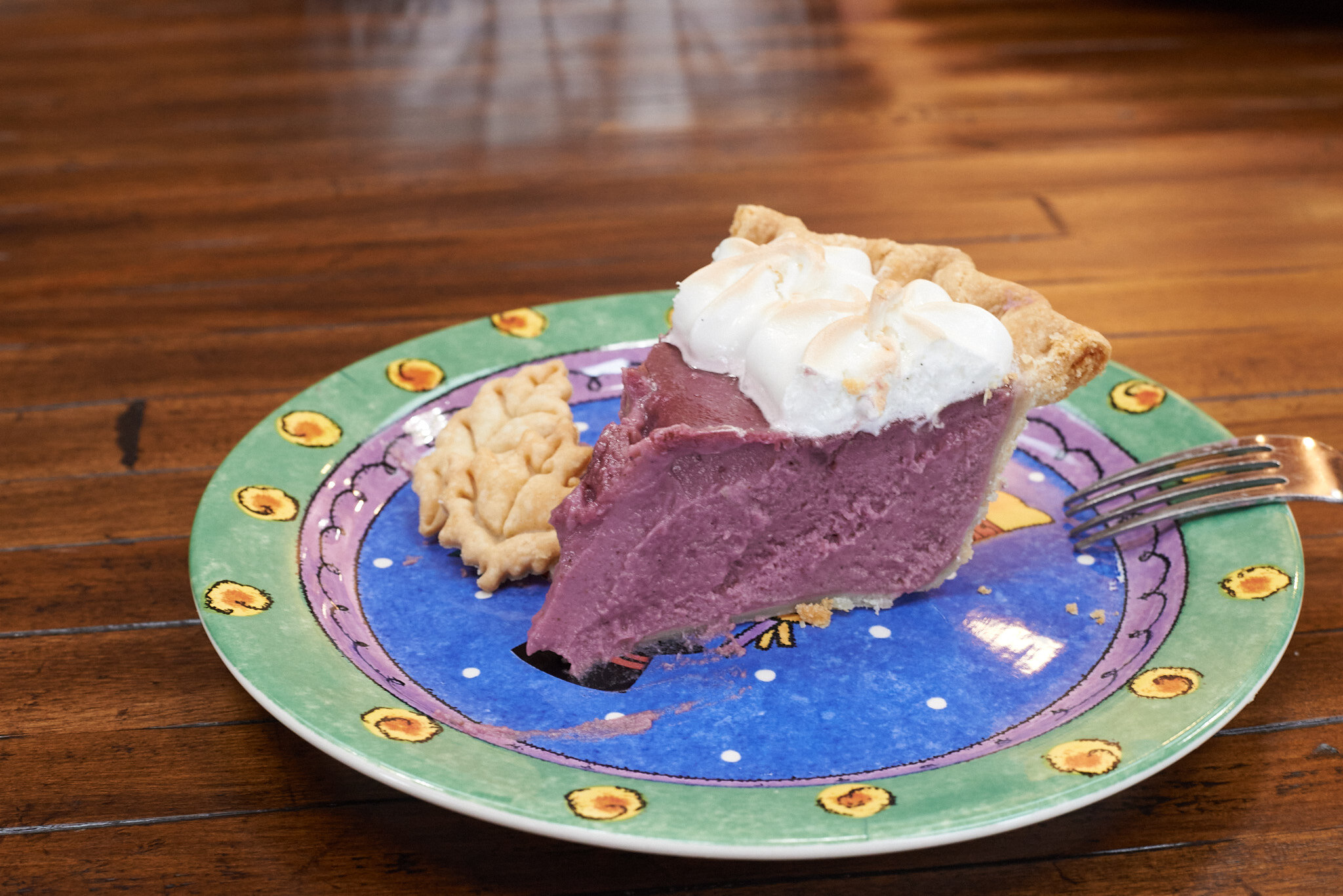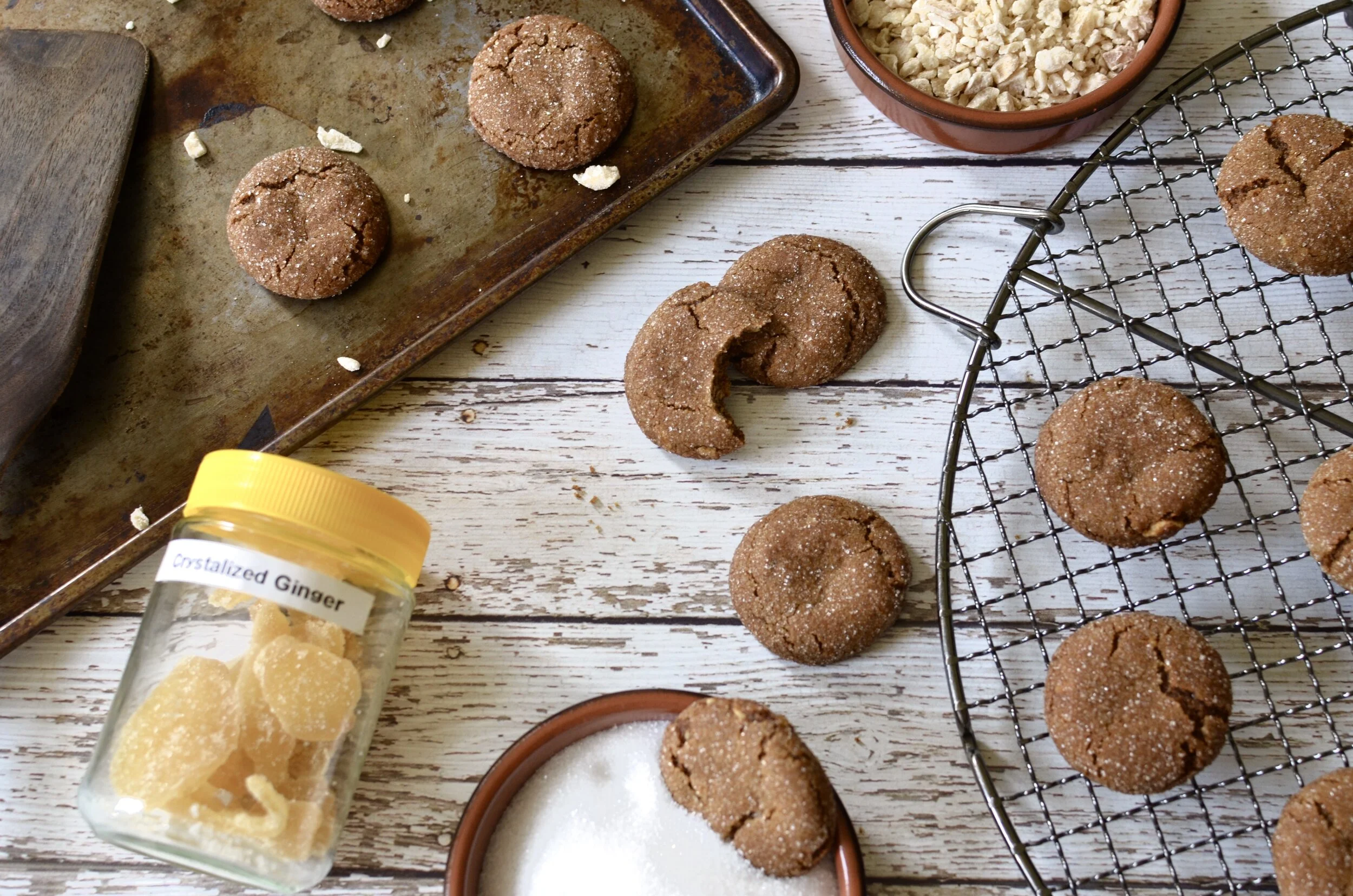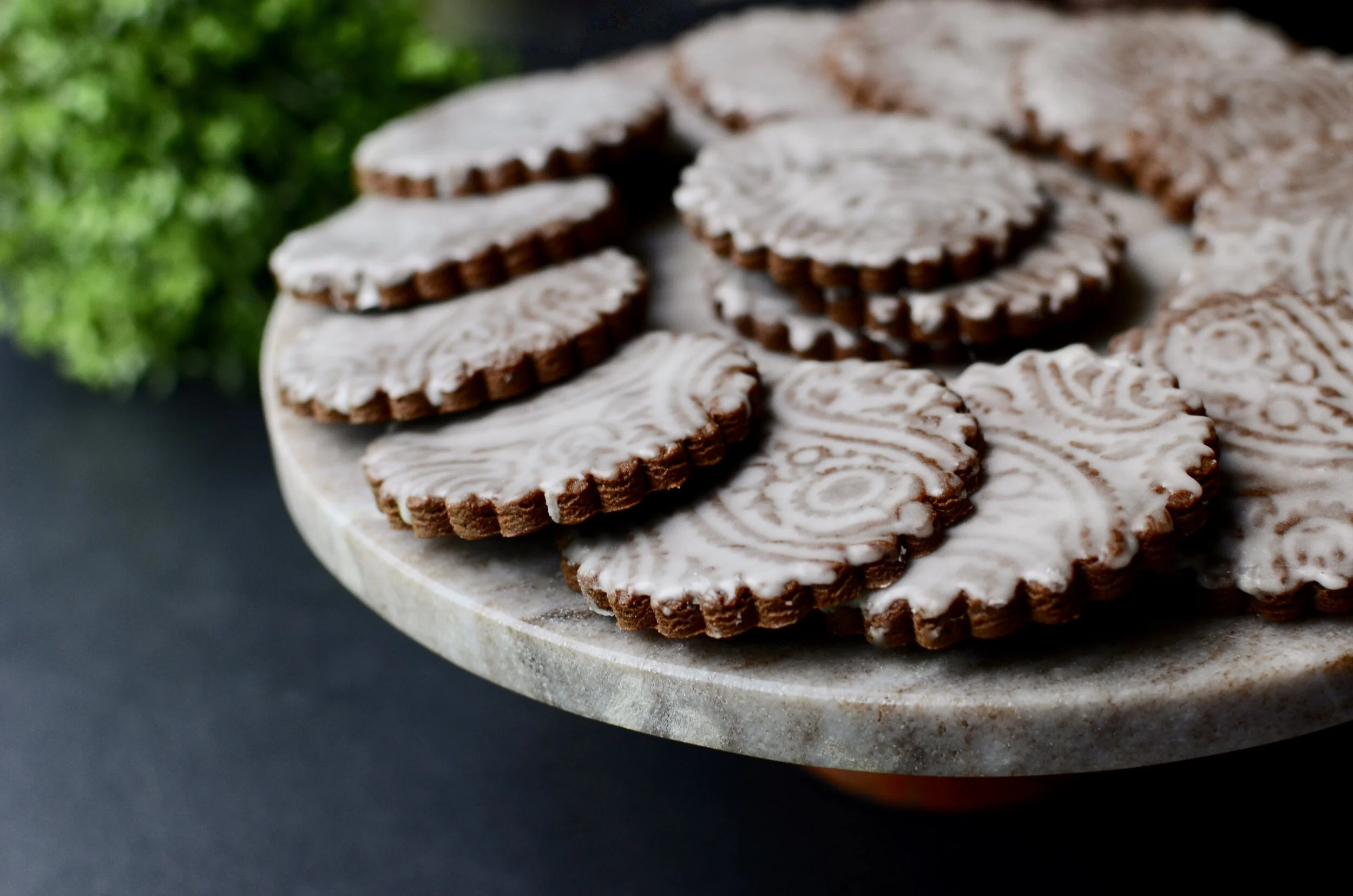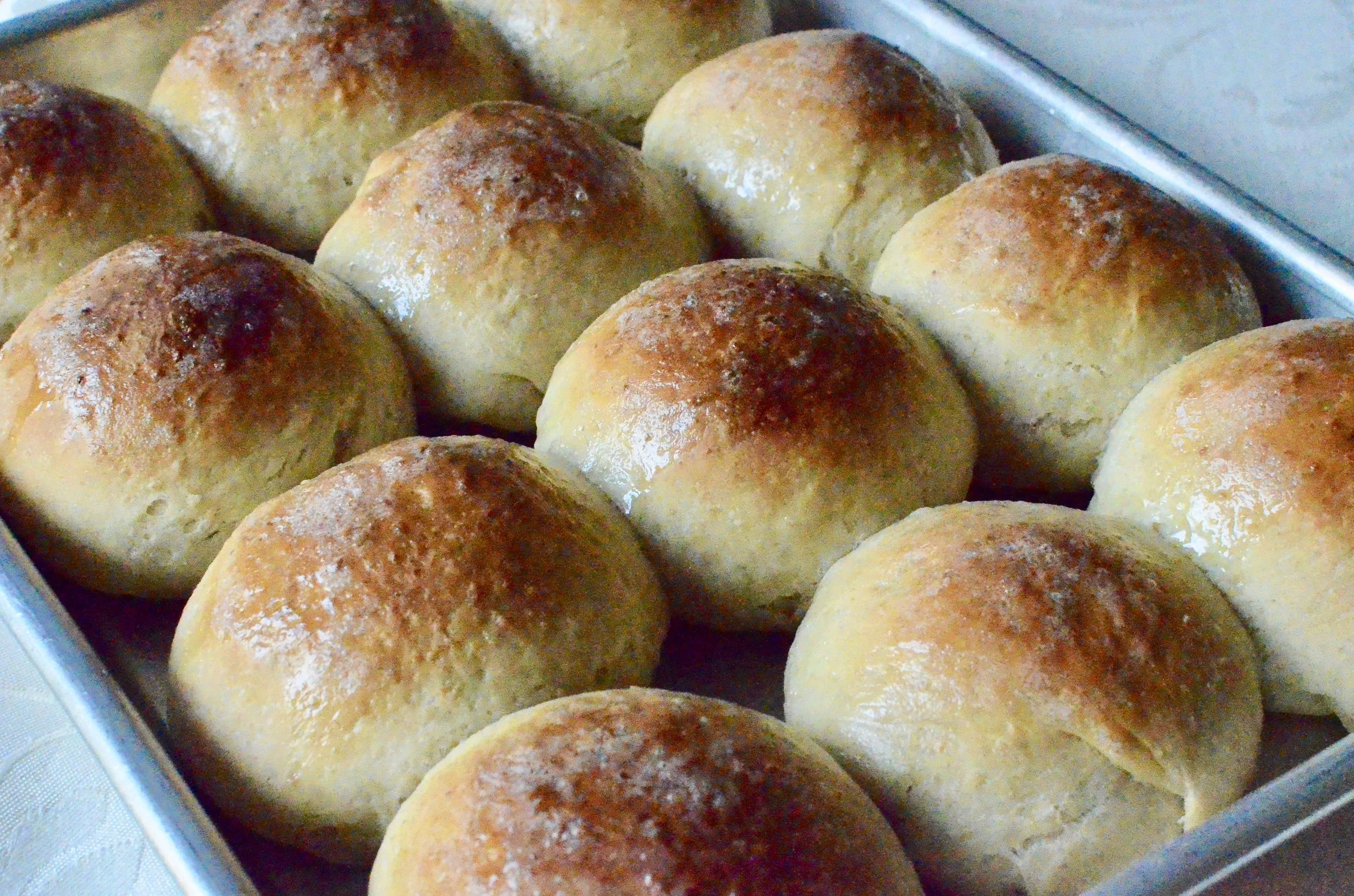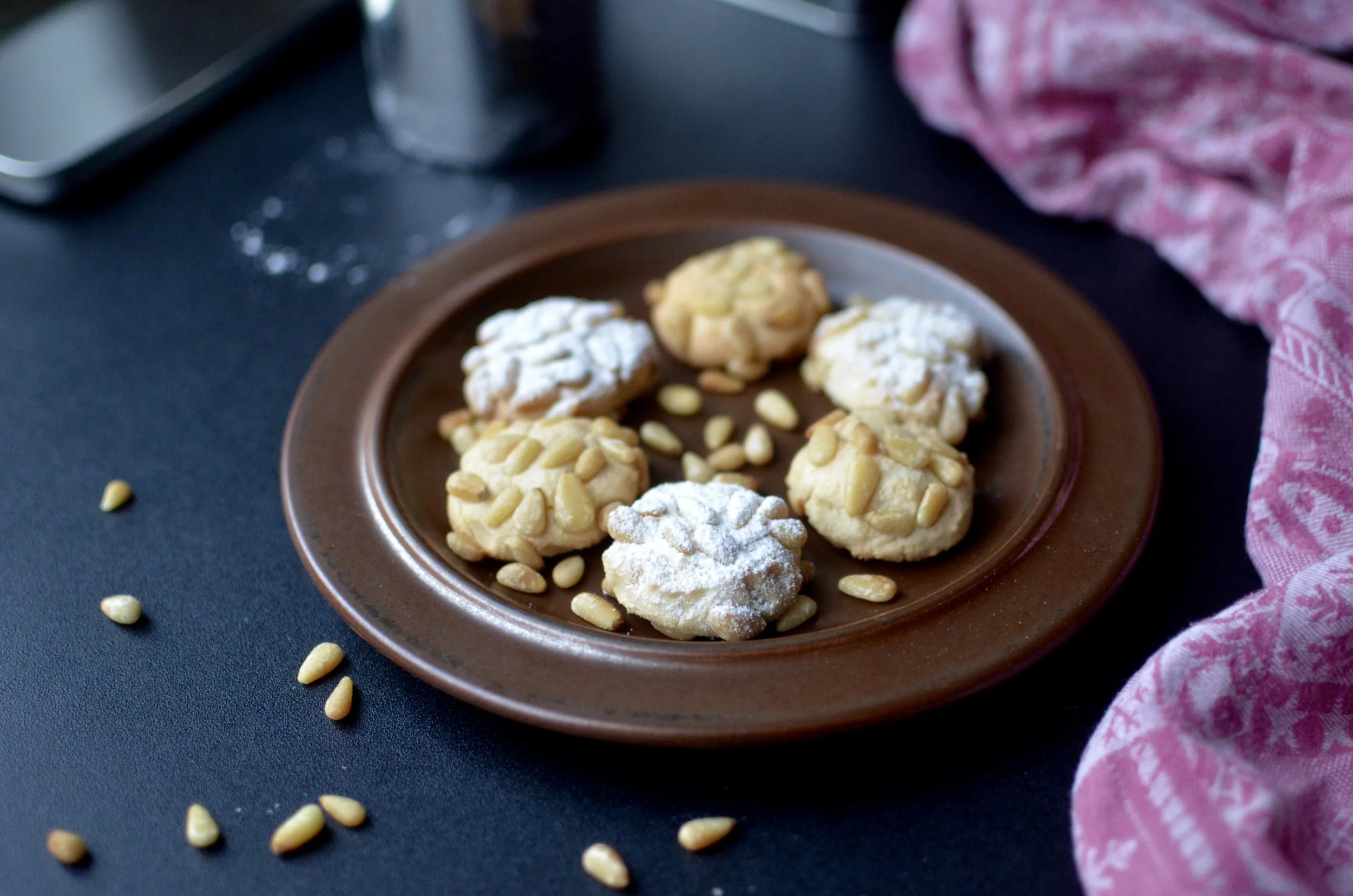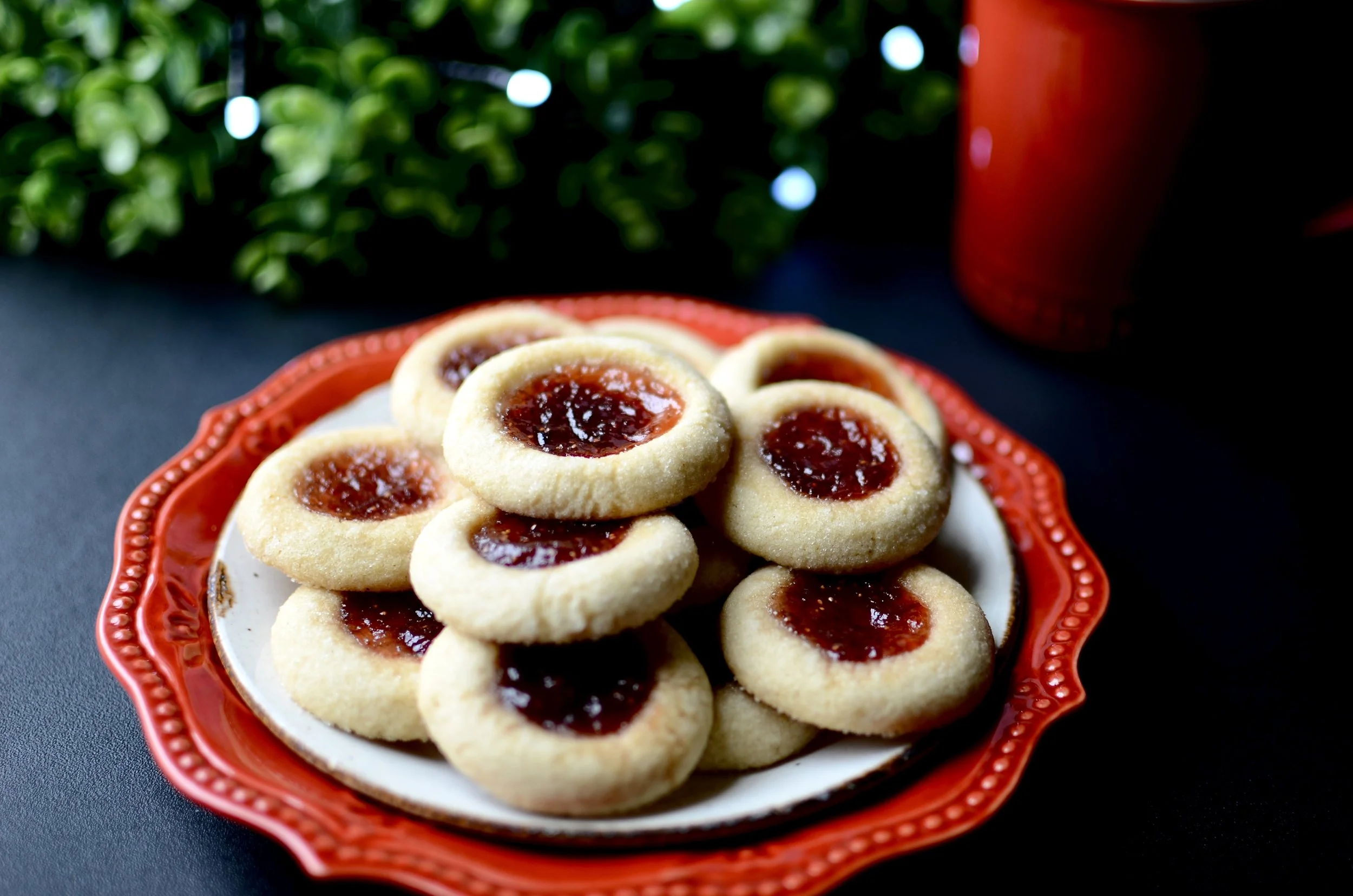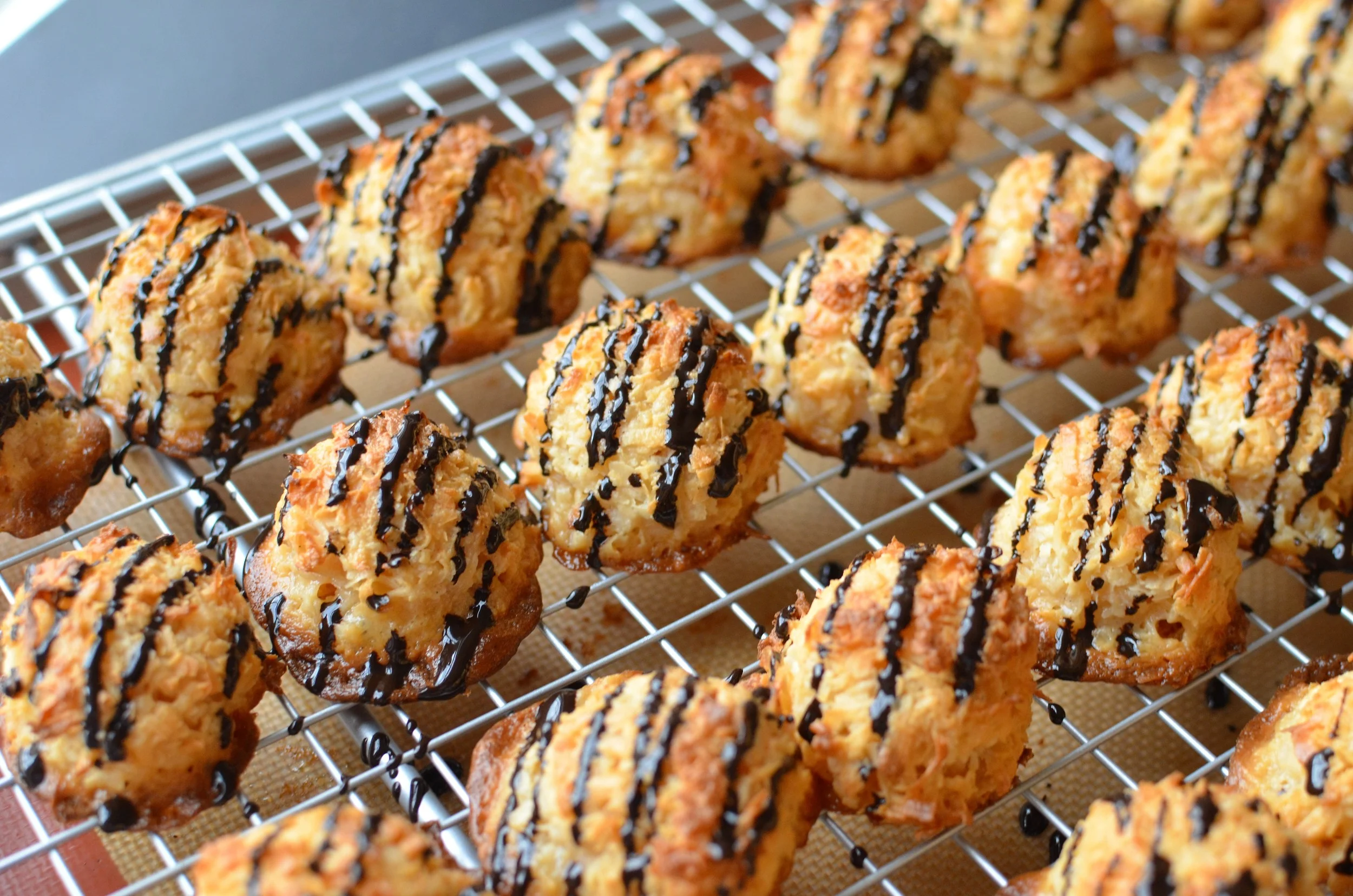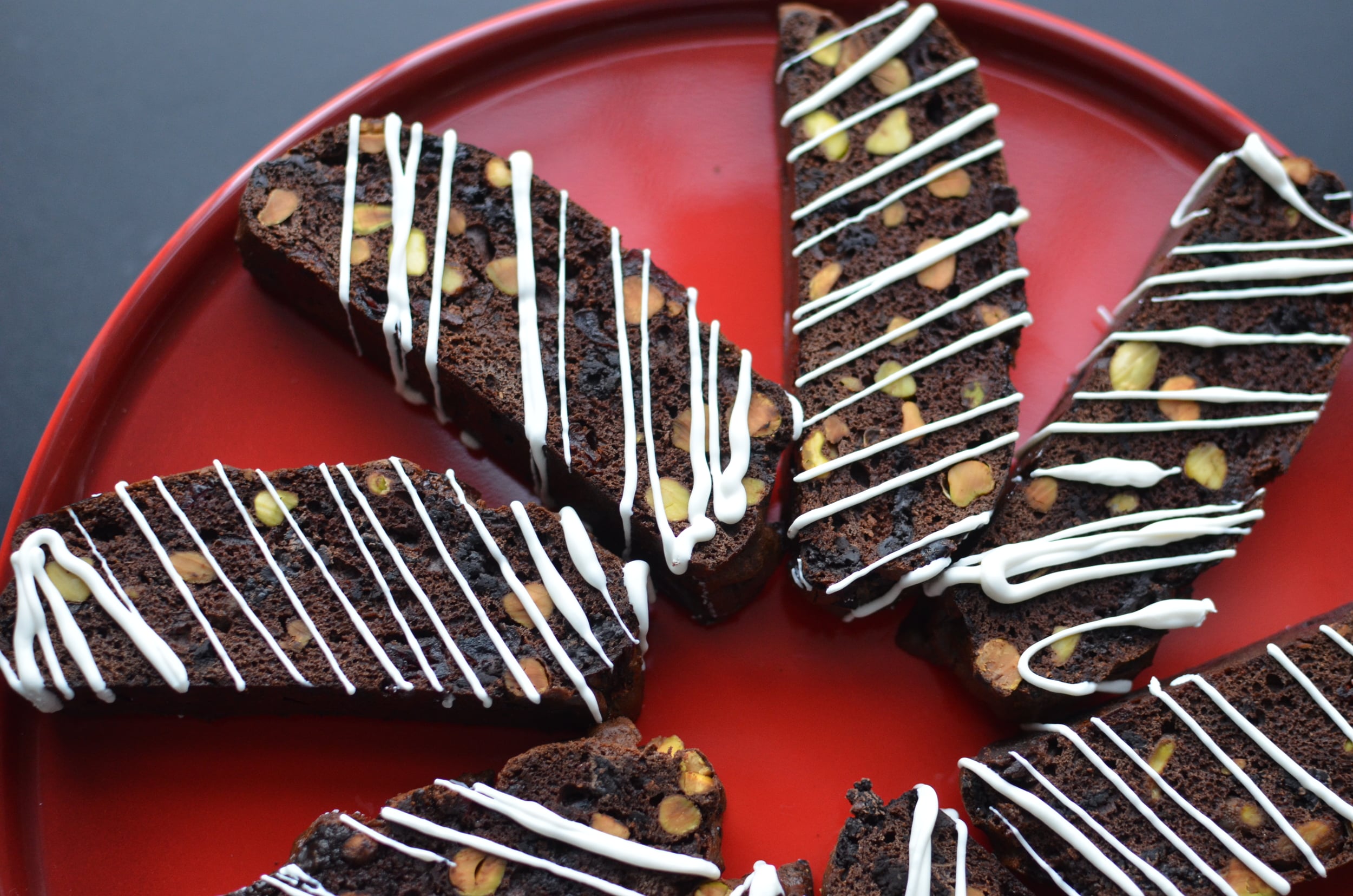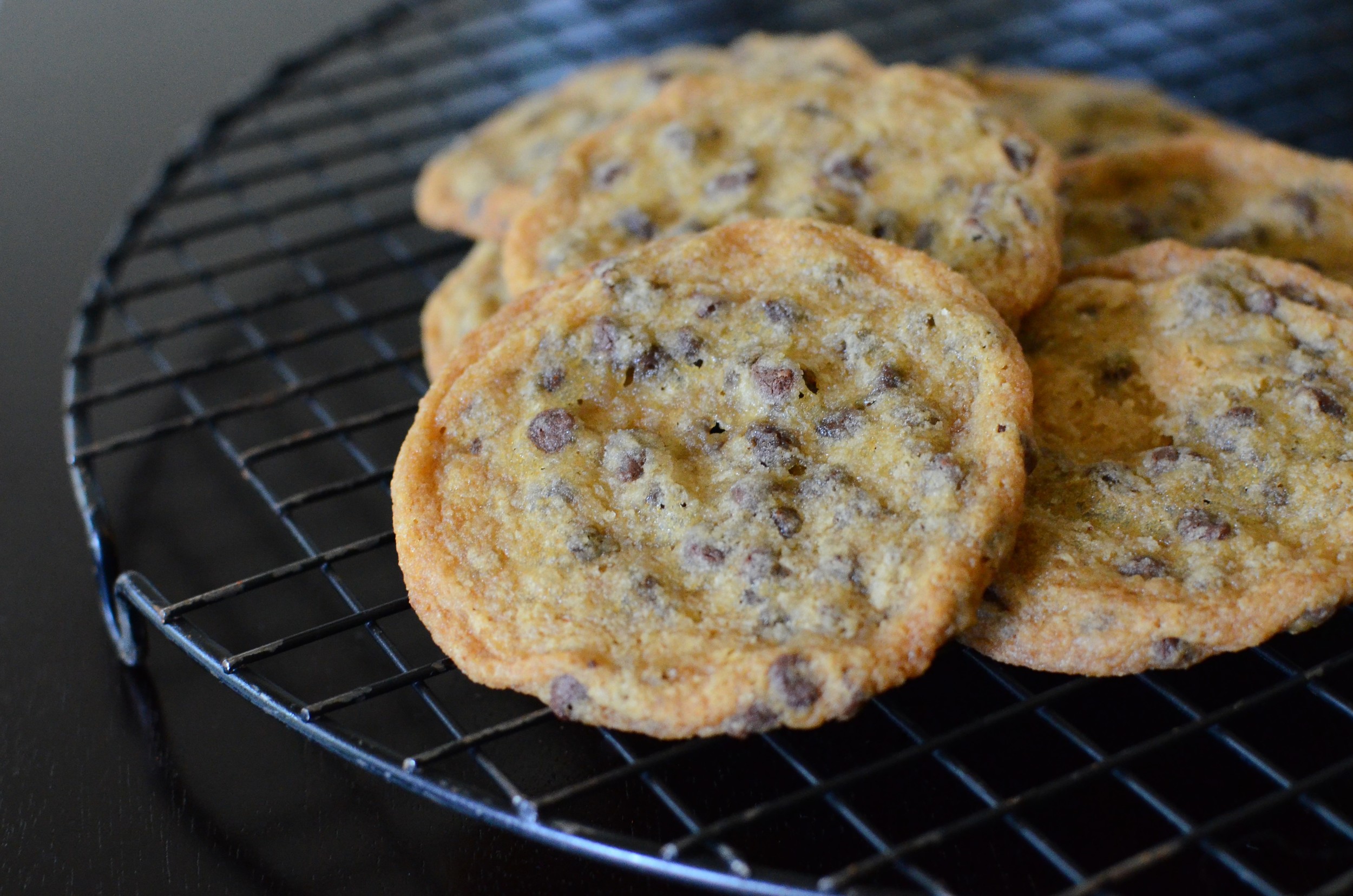Old Fashioned Raisin Filled Cookies
Patricia @ ButterYum
Here’s an old-fashioned Christmas time treat that my extended family always looks forward to. My husband’s beloved aunt made them for years end years, but she recently transitioned to an assisted living facility and no longer has access to a kitchen so she handed the torch to me.
This recipe makes 35 huge sandwich cookies, which is not a problem for our large extended family, but you may want to consider scaling the recipe down if you don’t need quite so many. By the way, one of these cookies and a cup of coffee or tea make an excellent breakfast.
Forget about rolling the dough on a floured surface. It’s much neater to roll between two layers of parchment or wax paper. I rolled this dough to 1/8-inch thickness using rolling guides to ensure my dough is exactly the same thickness throughout.
See how easily the parchment releases from the dough? Again, no extra flour making a mess everywhere.
I cut my dough with a 3-inch round cutter. The cookies will spread a bit in the oven so you don’t want to make them any bigger than this.
To ensure each of the cookies end up the same size, I use a #50 scoop to portion the filling. NOTE how filling in the photo isn’t overly juicy - you may need to drain yours a bit before using. Too much liquid in the filling will make the cookies bottoms soggy.
Time to add a 2nd disk of dough for the top and press it down slightly to spread the filling a bit. Don’t go too far - you don’t want the filling to ooze out.
Gently press the edges together to seal the dough - no need for water or egg wash to glue the disks together.
If you want to be fancy, you can do a little crimp action with your fingers. Or you can go “old school” and crimp the edges with a fork. I’m feeling fancy today. Use a toothpick to make a little vent hole in the center of each cookie and chill for at least 15 minutes before baking.
The cookies puff and spread quite a bit in the oven so don’t put more than 8 on a half sheet pan (5 or 6 if you use a smaller cookie sheet).
Cool completely and enjoy! Store at room temperature in an airtight container for up to a week.
Items used to make this recipe:
(affiliate links)
pure vanilla extract https://amzn.to/3hxflWk
rolling guides https://amzn.to/3587cCP
parchment sheets https://amzn.to/3uM1G6o
round cutter set https://amzn.to/36eDShn
half sheet pans https://amzn.to/3gJjmHy
silpat liners https://amzn.to/3Bj6uBx
#50 scoop (NOT 50mm) https://amzn.to/3JfbvxE
Old Fashioned Raisin Filled Cookies
makes 35 very large cookies
Ingredients
Dough:
1/2 pound unsalted butter, room temperature
2 cups lightly packed brown sugar
3 large eggs
4 cups all purpose flour
1 teaspoon baking soda
Filling:
1 pound raisins
1 cup water
3/4 cup granulated sugar
2 tablespoons cornstarch
1/2 teaspoon pure vanilla extract
Recipe Directions
To Make the Dough (the night before baking):
In the bowl of a stand mixer fitted with the paddle attachment, cream butter and brown sugar together until light and creamy (about a minute).
Add the eggs, one at a time, until each is fully incorporated; scrape down the sides of the bowl as needed.
Add the flour and baking soda until no traces of dry ingredients remain.
Transfer dough to a gallon-size zip-top plastic bag and chill overnight before using.
To Make the Filling:
In a medium saucepan over medium-high heat, combine raisins, water, sugar, and cornstarch, stirring occasionally, until the mixture reaches a full boil.
Remove from heat and stir in pure vanilla extract.
Transfer filling to an airtight container and allow to sit at room temperature until needed (can be made a day ahead).
To Assemble and Bake the Cookies:
Preheat oven to 350F, place rack in center position, and line 2 or 3 half sheet pans with silpat liners.
Allow cookie dough to rest at room temperature for 15-20 minutes before rolling (or knead until pliable).
Roll dough to 1/8-inch thickness between two layers of parchment or wax paper.
Use 3-inch round cutter to cut 8 bottoms per sheet tray.
Top each bottom with a #50 scoop of filling (a little over 1 tablespoon). Be sure to drain away excess liquid if your filling is very “juicy”.
Cut another 8 dough rounds to top the filling for each cookie.
Gently press to flatten cookies before crimping the two disks of dough together with your fingers or a fork; use a toothpick to make a small vent hole in the center of each cookie.
Chill for 10-15 minutes before baking.
Bake one sheet pan at a time for 10 minutes; remove from oven and allow cookies to cool completely before serving. Store leftovers in an airtight container.
Notes
For best results, bake only one sheet pan at a time and be sure cookies have chilled properly before baking.
No need for extra flour when rolling dough between two layers of parchment or wax paper.
Filling should not be too goopy or “juicy” when filling the cookies. Drain away excess liquid before using to prevent the bottom of the cookies from getting soggy.
